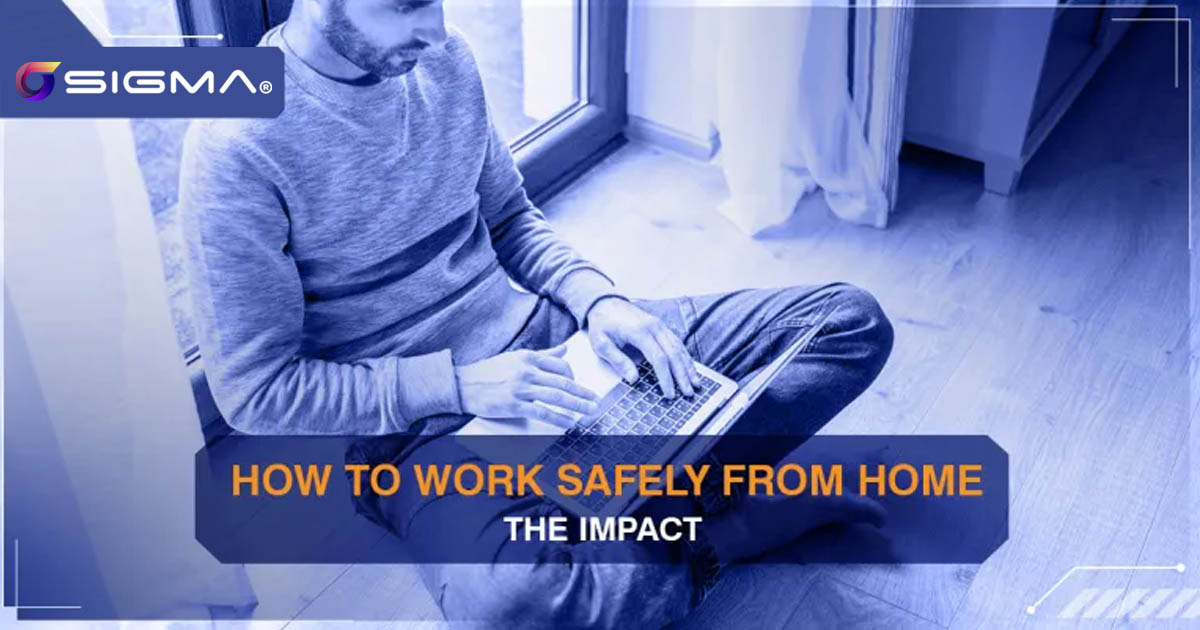
How to Work Safely from Home – The Impact
We continue with our series of articles on working safely from home.
We previously given an introduction to the topic of working from home, and how it’s becoming a new norm even beyond COVID-19, with companies opting to continue the trend even after the pandemic abates. We also took a look at some of the threats we face when we work remotely, away from the safety of our well-controlled office environments.
Now we look at the impact these threats can have—if successful—on us, hoping to elucidate through this info the imperative of rendering our home environments as safe as possible.
The impact of security threats on our lives and work
For many of us working from home, it might not be abundantly clear just how critical it is to patch up our security; we might be aware of a couple of effects but unaware of others. Following are a few effects that could ensue due to lax security.
Credential theft
Our digital world is comprised of a large number of gateways beyond which lies information with varying degrees of sensitivity. The normal and ideal condition is that only we—or those we have authorized—have access to that information.
But what happens when that is not the case?
Well, you can easily imagine the effects based on which credentials were stolen.
Access to your credit card or bank information could mean theft of funds or transactions made with your account; access to your email could spell a disaster that threatens all of the accounts created with that email; access to your work intranet means that an attacker is now lurking within the network, potentially able to access sensitive organization data.
Data loss/theft
Akin to credential theft—and sometimes closely following it—is data theft. Once attackers have access to an account they will search for data that is valuable and can be used to bring in a profit if, for example, it is sold.
Another scenario is the deletion of data. In cases of corporate espionage, the objective of the attack is to make sure the target no longer has access to the data, rather than acquiring it for profit.
Malware infection
Sometimes when we expose ourselves to lax security, attackers bypass our defenses to plant malware on our devices. These programs can serve many different functions such as spying on the activity taking place on the device, extracting data, or even using the device’s resources for the benefit of the attacker.
Compliance breach
Security measures that are not up to scratch also constitute an issue in industries or domains that require compliance to certain standards. These realms might enforce compliance in a myriad of ways, such as levying fines on breaches or applying penalties or sanctions to the offending organization. When we work from home we need to make sure that we observe compliance to standards in the devices and networks we use, and in the behaviors we exhibit.
Still not convinced…?
These are not—of course—all of the effects of threats penetrating our defenses. If you feel you need to find out more about the effects of security breaches you can read our other articles outlining some of the most advanced cyberattacks and the risks and dangers associated with those cyberattacks.
If you’d like to know more about keeping yourself safe, then be sure to read our next article in the series discussing password best practices, to arm yourself with the latest in keeping this most crucial aspect of your digital safety out of reach of cyberattackers.
We encourage you to share these articles with everyone in your organization, hoping that they will adopt a security-oriented mindset while working from home or otherwise.
As always: Stay safe!
